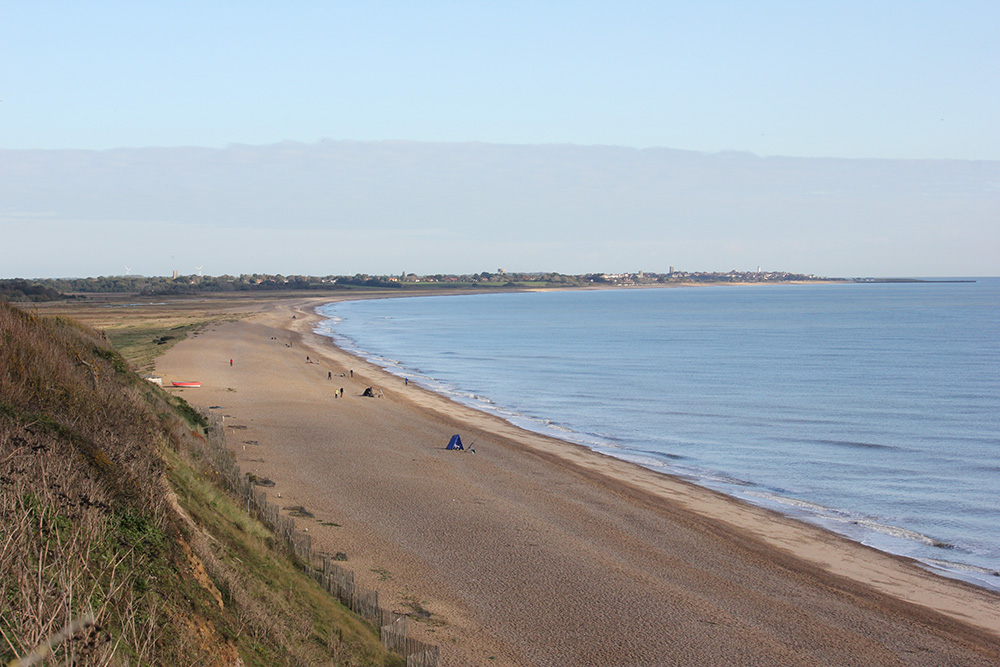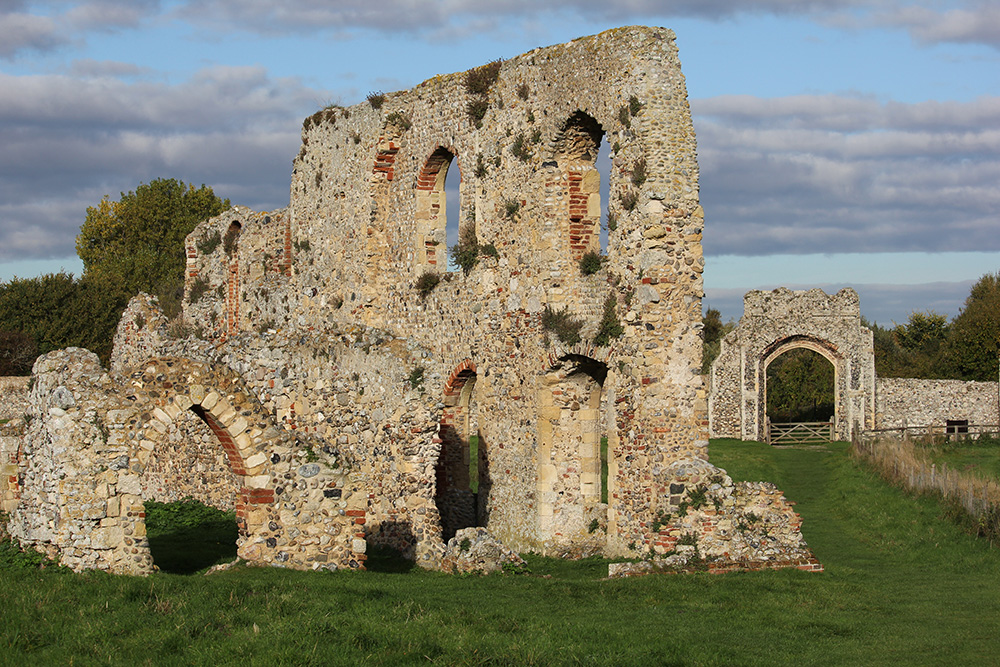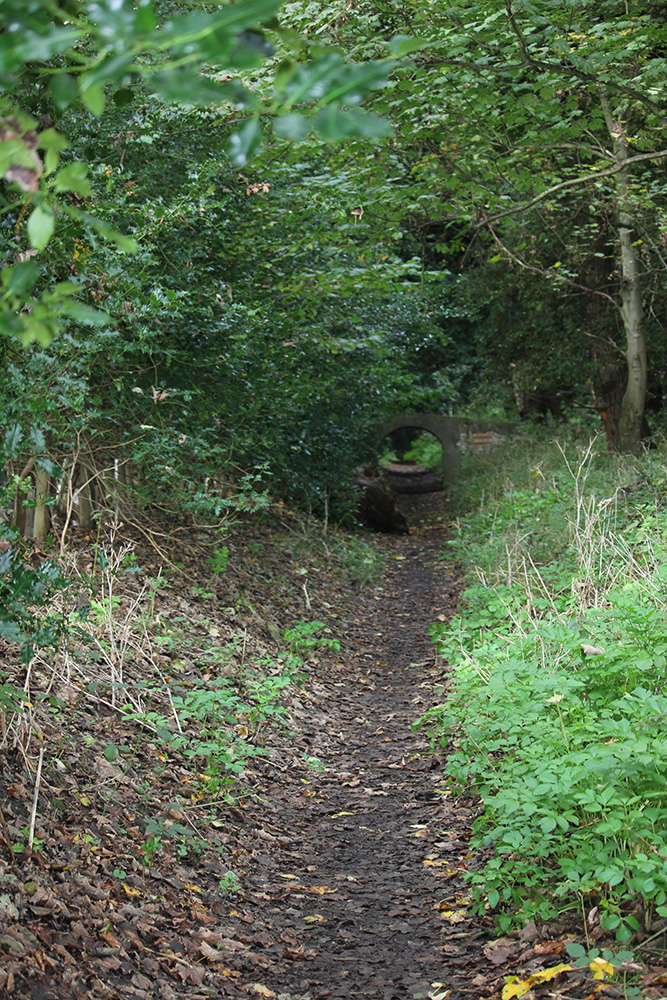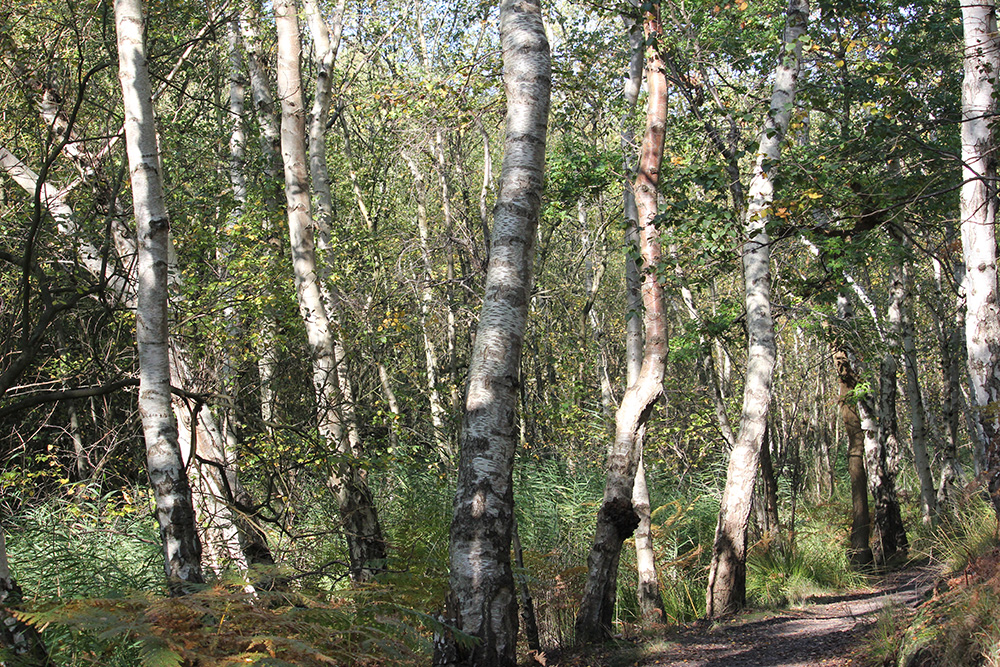One morning last October we emerged from The Ship Inn after a great sleep and sauntered down to the beach. I was wondering whether I dared take a swim but took one look at the brown storm-stirred sea and put off the decision. Standing on the shingle it was hard to imagine how this had once looked. The Dunwich River used to

enter the sea at this point and the harbour made this an important port – the most important in East Anglia. Now there was just a long stretch of sand and shingle. We strolled south a little and the sun made the cliffs glow orange. This is where - reputedly - people hear the church bell although the last piece of the church fell into the sea in 1911. We approached the cliff and saw odd white objects poking out of the sandstone: pieces of human skeletons.

Up on the coastal path that runs south from the hamlet of Dunwich between the remains of one of the priories and the sea, a thin strip of forest there hides a few eighteenth century gravestones. These must have lain right at the edge of the cemetery. A little further south, a low-lying straight path joins the one we were on and led us to a low footbridge. This

had been Dunwich’s main street. Now it was silver birch forest hopping with birds.
What would it have been like to stand in the middle of this town in Dunwich’s heyday in the thirteenth century? Then it had a population of 4000 which was half the size of London and much larger than Norwich and Ipswich. Dunwich was big enough to need two priories, as well as a leper hospital to isolate infected sailors and others. It was a busy thriving community, port and trade centre.
Over three nights early in 1286 though, storms removed lower parts of the town and reshaped the coastline so that the all-important harbour was no longer connected to the sea. The Dunwich River was rerouted northwards and eventually forced its way through a sand-bar between Walberswick and Southwold nearly three miles away.
After the storms, the townsfolk excavated the spit and reopened the harbour. They worked to protect the sandy ground that the town was built on too but a further big storm forty-two years later closed the harbour for good. Dunwich went into decline. It had comprised eight parishes but by 1816 there were only a few houses and half a church remaining. By 1832 when the Reform Act became law, the “town” had two members of parliament, but a voting population of just twelve so it was labelled a “rotten” borough and lost its representation.
Standing amidst the silver birches I tried to picture some of the lives that have been lived out on this spot, all the struggles to make ends meet, all the fortunes made and lost and all those struck by leprosy and other feared pestilences. Now this place seemed pristine, providing a home for blackbirds, great tits, woodpeckers and smaller wildlife. To this day, the land behind the sandbar remains boggy and of little use to humans, but the floodplain of the Dunwich River is used by migrating wildfowl and other marsh-dwellers.
In the distance I heard the bellow of a red deer stag and knew Nature had taken it all back.
